Near Eastern History Collection (9 vols.)
Digital Logos Edition
Overview
This comprehensive collection of primary texts and secondary literature assembles the best in Near Eastern scholarship from professors at The Hebrew University in Jerusalem. Combining primary texts, English translations, and expert commentary and analysis, the 9-volume Near Eastern History Collection brings the latest scholarship to bear on the history, geography, and culture of the birthplace of civilization. These important books from Magnes Press include textual artifacts and translations of Ugaritic literature, Aramaic ostraca, and Aramaic amulets, along with translation and commentary. This collection also contains penetrating studies of place-names, a fascinating history of the alphabet, and a complete introduction to art in Ancient Palestine. It also includes a volume of over thirty essays, whose topics span the entire range of Near Eastern history from Sumer to the Persian Empire.

- Hundreds of images and photographs of texts, artifacts, and works of art
- Useful charts and diagrams
- Maps and geographical illustrations with detailed explanations
- Title: Near Eastern History Collection
- Authors: Israel Eph’al, Mordechai Cogan, Yoel Elitzur, Hannah Katzenstein, Yoram Tsafrir, Michael Avi-Yonah, Moshe Weinfeld, Joseph Naveh, Shaul Shaked, U. Cassuto
- Publishers: Magnes Press; Eisenbrauns; Fortress Press
- Publication Dates: 1971–2004
- Volumes: 9
- Resources: 9
- Pages: 2,643
- Format: Digital > Logos Research Edition
- Resource ID: {7D90FB07-1812-4BD1-90B6-EFC73498EFEE}
This title is included in the following collections
You can save when you purchase this product as part of a collection.
Logos 5 Portfolio Legacy Libra...
$4,749.99$4,749.99Logos 6 Collector's Edition Le...
$11,399.99$11,399.99
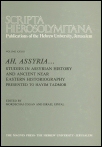
This book contains thirty essays on ancient Near Eastern history and historiography, spanning the entire range of Mesopotamian history, from Sumer to the Persian Empire. Contributors investigate previously unpublished texts for the first time and reexamine longstanding works with fresh eyes. The majority of these studies are devoted to the Neo-Assyrian period, the research focus of Hayim Tadmor, to whom this volume is dedicated.
Mordechai Cogan is professor of biblical history and teaches in the department of Jewish history at The Hebrew University. He has written commentaries on several books of the Bible and published studies on the contact between Israel and the Ancient Near East.
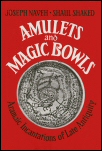
It was a widespread practice in the area of Palestine, Syria and Asia Minor during the fourth to the seventh centuries of the current era to use talismans written on metal sheets in order to ward off the powers of evil, to heal people, or to gain the love of a person. The common Babylonian practice of the same period was to write incantation texts on earthenware bowls. This book contains the texts of all the legible amulets in Aramaic known to date, as well as thirteen hitherto unpublished bowls. This volume contains translations and commentaries, and a detailed glossary of all the words is given. The study of these incantations provides a glimpse into the religious feelings and practices of common people in the Talmudic period and enriches our knowledge of Palestinian and Babylonian Aramaic usage. This book contains a wealth of new material for the history of magic in the Near East, edited and interpreted with meticulous scholarship.
Shaul Shaked is Professor of Iranian studies and Comparative Religion at The Hebrew University of Jerusalem. His research interests include Zoroastrianism religion in the Sasanian period, the transmission of symbols, themes and ideas from Sasanian Iran to Islam, early Judeo-Persian language and literature, magical literature in late antiquity and in early Islam.
Joseph Naveh is professor emeritus of West Semitic Epigraphy and Paleography at The Hebrew University of Jerusalem. He has written numerous books and articles on ancient west Semitic inscriptions and scripts.
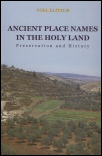
This book answers a basic need in the historical geography of the Land of Israel, its implications for scholarship in Hebrew and Aramaic linguistics, Bible studies and numerous other areas.
The earliest scholars of historical geography of the Holy Land preserved the names of geographical features—or toponyms—in Arab speech up to modern times. Consequently, Arabic toponyms have become a major source for identification of ancient site. For students of Hebrew and other Semitic languages, the toponymy of the land of Israel provides a kind of ancient recording of pre-Arab linguistics. Ancient place-names are also of importance for scholars of the rabbinic studies, Qumran studies, Samaritan studies, the history of Islam, and early Christianity.
Unfortunately, the use of this valuable tool—using ancient place-names to identify linguistic features—is not governed by any clear-cut rules. The present volume formulates the rules of toponym preservation based on positive identifications, and through these rules to deal with various historical and linguistic questions.
Yoel Elitzur is engaged in integrated research in several disciplines: Bible, Hebrew language and the historical geography of the land of Israel. He is head of the Department of Eretz-Israel Studies at Herzog College, and teaches at The Hebrew University of Jerusalem.
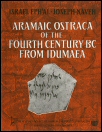
The literary documentation on southern Palestine at the end of the Persian period and the beginning of the Hellenistic period is very poor. Hence recently discovered Aramaic ostraca data 361–311 BC are the almost exclusive source for the study of the ethnic structure and the economic life in the period under discussion. Containing Aramaic words which are unknown from other sources, they also bear linguistic significance.
This book contains the photographs, transliteration and translation with a commentary of 201 ostraca. It also contains a detailed introduction to the substantial and historical significance of the ostraca, as well as a glossary and an index of the proper names.
Israel Eph'al is Professor Emeritus of History of the Jewish People at The Hebrew University of Jerusalem. His academic interests include Israelite history within the Assyrian, Babylonian and Persian empires; ancient Near Eastern military history; and West Semitic epigraphy.
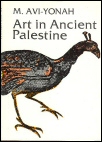
This volume presents a selection of publications by the late Professor Michael Avi-Yonah, some of which are out of print or otherwise difficult to obtain. The articles chosen from Avi-Yonah’s more than 400 publications deal with various aspects of art in ancient Palestine, a subject with which Avi-Yonah was much concerned throughout his life.
One of the problems that occupied a central place in his studies was the effect of the meeting of occidental and oriental cultures after the conquest of the East by Hellenism, and this interest is reflected in the first group of publications collected here. Others deal with specific objects (e.g., the Leda sarcophagus) or present the whole range of artistic expression in one medium, as recovered from the past through archaeology (e.g., mosaic pavements). Also included are three articles (in French) on certain problems concerning mosaic pavements, in particular those of synagogues. A number of illustrations have been added to the plates of photographs published with the original articles, and a general index is appended.
Michael Avi-Yonah was considered an authority on the archaeology and art history of ancient Palestine during the Hellenistic, Roman and Byzantine periods.
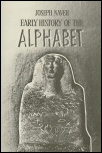
Alphabetic writing is one of the principal features of Western culture. Our knowledge of the early history, development and spread of the alphabet is constantly changing. In this introduction to West Semitic epigraphy and paleography, Joseph Naveh outlines the history and current developments in the field, using evidence available to date.
Joseph Naveh is professor emeritus of West Semitic Epigraphy and Paleography at The Hebrew University of Jerusalem. He has written numerous books and articles on ancient West Semitic inscriptions and scripts.
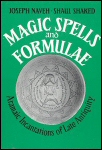
Since the publication of Amulets and Magic Bowls: Aramaic Incantations of Late Antiquity (also available in this collection), several additional magic texts have come to the attention of the authors. This volume comprises a new collection of seventeen Palestinian metal amulets, accompanied by fourteen Babylonian incantations on earthenware bowls, and twenty one magic texts from the Cairo Geniza. As in Amulets and Magic Bowls, all texts are presented with translations, commentaries and photographs. The amulets are also reproduced in facsimile drawings. The book contains an introduction which deals with the relationship between liturgy and magic, as well as medicine and magic. There is also a glossary and detailed indices.
Shaul Shaked is Professor of Iranian studies and Comparative Religion at The Hebrew University of Jerusalem. His research interests include Zoroastrianism religion in the Sasanian period, the transmission of symbols, themes and ideas from Sasanian Iran to Islam, early Judeo-Persian language and literature, magical literature in late antiquity and in early Islam.
Joseph Naveh is professor emeritus of West Semitic Epigraphy and Paleography at The Hebrew University of Jerusalem. He has written numerous books and articles on ancient west Semitic inscriptions and scripts.
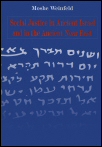
This book deals with the concept of justice and righteousness in ancient Israelite literature in comparison with identical concepts in ancient Near East. Various aspects of this concept are taken into consideration: philological, historical, sociological and theological. Moshe Weinfeld surveys social reforms in the ancient Near East from the third millennium BCE to the Hellenistic period. The first chapters discuss semantics and center in terms that denote social justice, such as social reforms embodied in the terms justice and righteousness and their equivalents in cognate languages. A separate chapter discusses the institutions of Shemitta and Jubilee in ancient Israel. A special discussion is dedicated to justice and righteousness on the individual level. Just as the ruler is commanded to do justice and righteousness—to free his subjects from oppression—so every individual is asked to help the poor and the needy in their distress, which is to do justice and righteousness with others.
Moshe Weinfeld is professor emeritus of Bible at The Hebrew University of Jerusalem. He is also author of History, Historiography and Interpretation, available from Logos in the Magnes Press Old Testament Studies Collection (12 vols.).
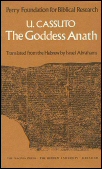
The book contains three parts:
- An introduction to Ugaritic literature that is based on the texts discovered (up to 1951) at the Ras-Shamra, in general, and on the epic of Baal in particular.
- Ugaritic tablets containing episodes from the epic of Baal, in which the goddess Anath plays an important role. This book includes a transcription of the Ugaritic text in Latin characters, Cassuto’s Hebrew translation, and an English translation.
- A commentary on these texts.
This work also sheds invaluable light on important and hitherto unexplained linguistic usages in the Bible, while the author’s brilliant methodology will serve as an enduring beacon of light to many generations of researchers.
Umberto Cassuto was an Italian historian and Biblical and Semitic scholar. He began to make a name in the world of scholarship by virtue of a series of articles mainly on the history of Jews in Italy. In 1912 he began to publish important papers and books on Bible studies. All his works are of great significance to this day. His 2-volume commentary on Exodus and his 2-volume survey of biblical studies are available as part of the Magnes Press Hebrew Bible Collection (12 vols.).